Hey there! I get it—dealing with a leaky water pump can be super frustrating. But don’t stress, because we’ve been there, and we’ve got you covered. You’re about to get the most practical, easy-to-follow advice that works.
Alright, so here’s the quick answer you’re looking for: a water pump leak happens when coolant sneaks out through cracks, bad seals, or gaskets. To patch it up for now, you can use stop-leak products, slap on some epoxy, or tighten any loose bolts. These are temporary fixes—they’re not meant to last forever—but they’ll keep your car going until you can get the pump replaced.
We’re about to dive into the nitty-gritty—how to choose the right fix, avoid common mistakes, and keep your car running smoothly without breaking a sweat. Let’s go
What Causes a Water Pump to Leak?
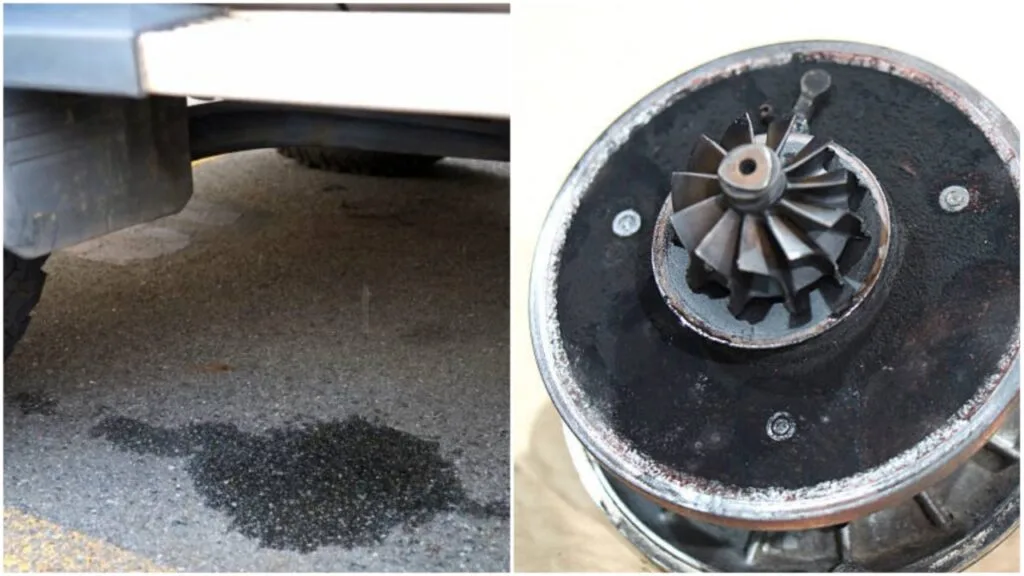
A mechanical pump circulates coolant through the engine to prevent overheating. But like any mechanical part, it wears down over time. There are a few reasons why your water pump starts leaking, and some surprise you.
The most common culprit is the seal. Water pumps have seals and gaskets that keep the coolant inside and prevent it from leaking. Over time, these seals wear out. Heat and pressure will break down those seals.
The constant expansion and contraction from engine temperature fluctuations also contribute to the breakdown. This eventually leads to a leak.
Then, there’s corrosion. Your coolant, if not replaced regularly, can become contaminated and corrosive.
When that happens, it eats away at the metal components in the pump, causing small holes and cracks. Sometimes, it’s not even the pump’s fault – it’s an old coolant that’s become acidic. It’s just not suitable for your car.
Lastly, there’s physical damage. Maybe you hit a pothole too hard, or there’s been wear and tear from a loose belt. Whatever it is, physical damage can compromise the pump and cause leaks.
How Do You Know Your Water Pump Is Leaking?
Sometimes, you may notice coolant leaking from the front of your car right under the engine.
You may not see a leak at other times, but you may notice your engine running hot or overheating.
The trick is to catch the problem before it gets out of hand. When you pop the hood, check for residue around the water pump or belt.
The white or orange residue indicates that the coolant leaks and evaporates.
You may need to be ready to spend money on a new pump, but some temporary fixes can save you time.
The Quick Fixes
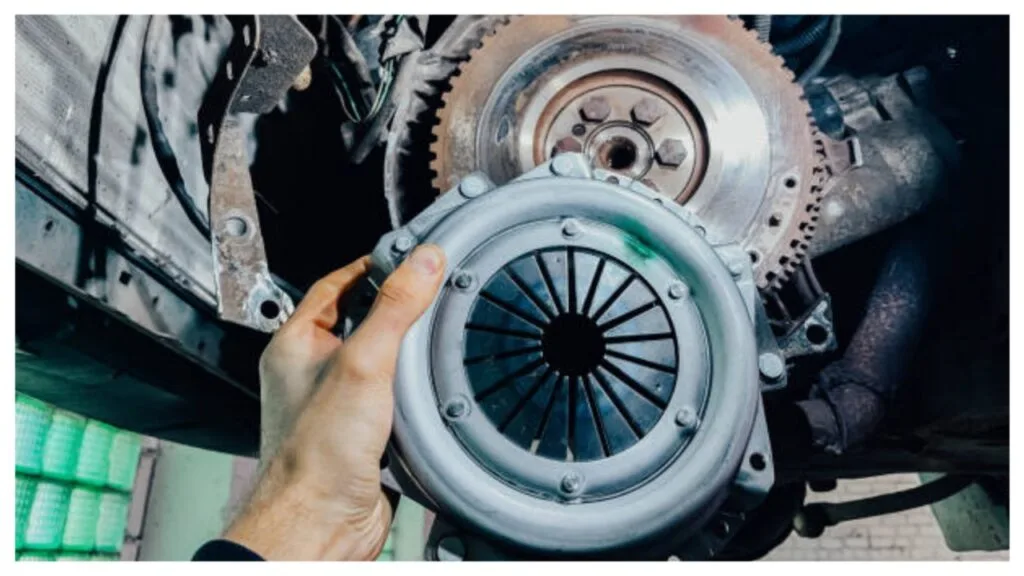
It won’t solve the underlying issue. Nonetheless, it can help you keep things running smoothly. This will work until you’re ready for a permanent repair.
One of the most accessible and popular solutions is to use a radiator-stop leak product. These things are designed to help seal minor leaks in the cooling system, including the water pump.
They work by circulating through the coolant system, finding the leaks, and plugging them with sealants or additives.
If you decide to go this route, follow the instructions on the product. Usually, it’s as simple as pouring the solution into the radiator or coolant reservoir.
But be careful—this fix is more effective on minor leaks. If your pump is gushing coolant, no stop-leak solution will save it.
Another choice, though less common, is using high-temperature silicone sealant. This requires a little more hands-on work.
First, thoroughly clean the leaking area, removing any debris or oil. Then, apply the silicone generously around the leak. Once dry, the sealant will form a temporary barrier to keep the coolant inside.
Why Temporary Fixes Aren’t a Long-Term Solution
It’s tempting to rely on a temporary fix. This is especially true if you need more time to handle the cost. The hassle of replacing the water pump can be daunting.
But here’s the thing – a leaking water pump is a sign that something isn’t right. And while temporary fixes can help you limp along, they won’t hold up over the long term.
A leaky water pump can eventually lead to more significant problems. If you ignore the issue for too long, the engine can overheat. And we all know that overheating a motor is bad news.
If your engine gets too hot, it can warp the cylinder heads or blow a gasket. Then, you’re looking at a much more expensive repair than replacing the water pump. That’s why seeing these quick fixes is essential as soon as possible.
When to Get the Pump Replaced
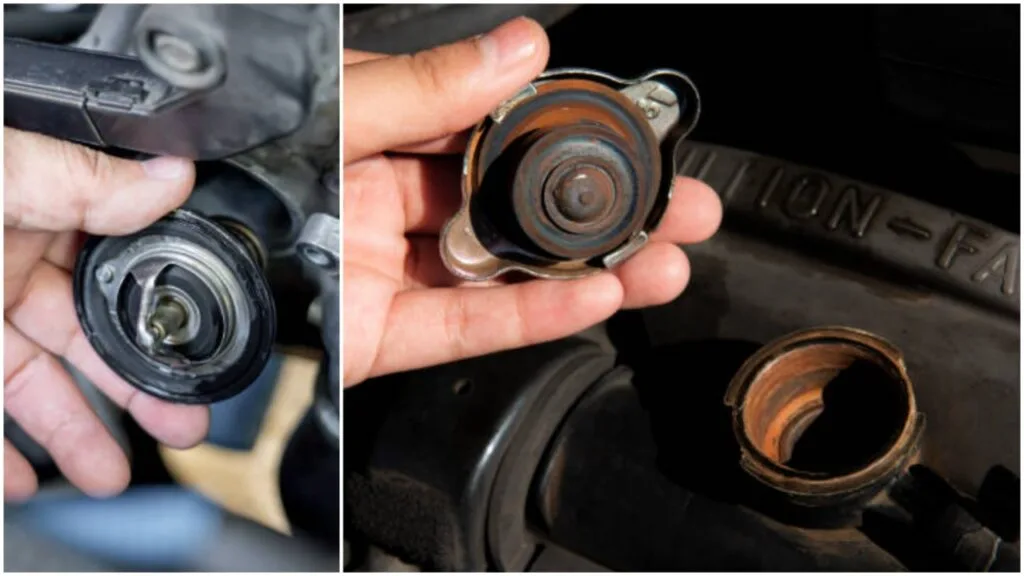
It depends on how bad the leak is. If you’re only losing a small amount of coolant, the temporary fix is holding up. You can keep going, stretching it out.
It lasts for a few weeks. But if you’re constantly topping off the coolant or the engine’s overheating, it’s time to bite the bullet.
You can usually tell the pump is failing if it starts making a grinding noise. Another sign is a significant drop in coolant levels even after you’ve used a temporary fix. At that point, continuing to drive the car is risky.
Depending on your car, replacing the water pump will usually cost a few hundred dollars. I know it’s not cheap, but it’s much better than dealing with a blown engine.
Once the new pump is installed, you can drive with peace of mind. You will know that your cooling system is back in shape.
Wrapping It Up
Temporary fixes like stop-leak products or silicone sealant can help you get by for a little while.
But don’t fool yourself into thinking that the problem is gone. A leaking water pump needs to be replaced sooner rather than later.
If you notice coolant on the ground or your engine’s running hotter than usual, don’t ignore it.
If necessary, try a quick fix, but plan for a proper repair. It’s worth it in the long run.
Water pump construction
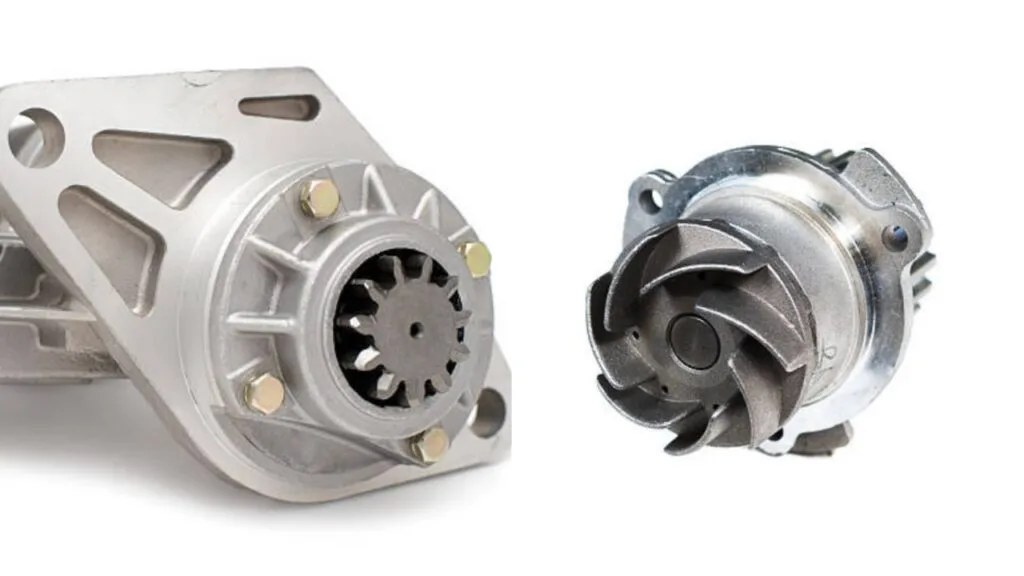
The water pump looks like an essential part but has several working components. The impeller inside is the heart of the pump.
A small fan-like part spins and moves the coolant through the setup. It’s usually metal or plastic; the pump can’t move coolant effectively if it breaks or wears down.
The pump also has bearings and a shaft that connects to the pulley system. If the bearings fail, the entire pump can stop working.
The seals are often made of rubber or other flexible materials. They keep the coolant from leaking out, and leaks occur when they crack or degrade.
Types of water pump failures
Water pump failures sometimes look different. Sometimes, the pump leaks slowly, making it hard to notice initially. The leak can be severe in other cases, causing coolant to pour out rapidly.
You also experience a pump that fails internally. The inside impeller stops spinning, even if the pump isn’t leaking, so no coolant gets circulated.
Another failure type is bearing wear, where the pump makes grinding noises before it stops working completely.
Coolant types and their effects on water pumps
Not all coolants are the same; choosing the wrong one can damage your water pump over time. Some coolants are designed for specific car makes.
Using a universal coolant in a car that requires something specific shortens the pump’s lifespan. For example, some European vehicles use a particular type of phosphate-free coolant.
If you use the wrong type, it can cause corrosion or buildup inside the pump. Always check your car’s manual to ensure you use the recommended coolant.
Environmental factors and their role
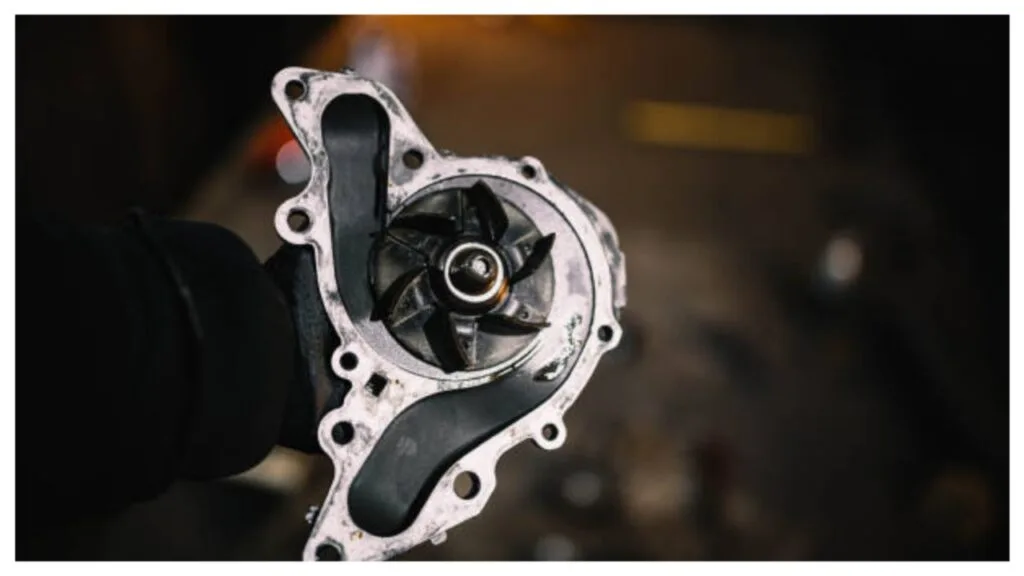
Driving in different environments can affect the life of your water pump. In hot climates, your cooling system works harder to keep the engine cool.
The extra heat can cause seals to crack faster and put more strain on the pump. In cold climates, the pump’s seals shrink and harden, which can lead to leaks.
Salt and grime from winter roads can also contribute to corrosion. This is especially true if they build up on the pump’s metal surfaces.
FAQ’s
How to stop a water pump leak?
Stopping a water pump leak begins with identifying the source. A common issue is a worn gasket or seal. Start by turning off the engine and letting it cool completely.
Check around the water pump for visible signs of coolant dripping or pooling. If you spot a leak in the gasket, the best fix is to replace it. Drain the coolant first to avoid spills.
Carefully remove the water pump and clean the old gasket material from the surface. Apply a thin sealant layer, position the new gasket, and reassemble the pump. Tighten bolts evenly to ensure a good seal.
Regular maintenance can prevent future issues. Monitor coolant levels and never ignore signs of overheating. This method works for most vehicles, but if unsure, consult a mechanic.
Water pump leakage problems?
A leaking water pump can create chaos for your engine. It’s the heart of your cooling system, and when it leaks, trouble isn’t far behind. Most leaks happen because of a worn-out gasket or a damaged seal.
These parts are small but crucial. Over time, heat and pressure take their toll. You might notice puddles under your car. The liquid is often green or orange, depending on your coolant.
Steam from the hood can also be a big clue. Ignoring these signs is risky. Low coolant levels can lead to overheating. That’s a quick way to damage your engine. Fixing the issue means acting fast.
Tightening bolts around the pump does the trick. But often, replacement is the best solution. New pumps come with fresh seals, solving the problem entirely.
How to fix water pump leak?
It’s vital for cooling your engine, and a leak can lead to overheating. Fixing it depends on the severity. Small leaks might be patched with a cooling system sealant.
These products work by circulating through the system and sealing minor cracks or gaps. However, this is a temporary fix. For a lasting solution, the water pump often needs to be replaced.
Start by locating the pump. It’s usually near the front of the engine, driven by a belt. Drain the coolant first to avoid a mess. Then, remove the belt and any attached components.
Take out the old pump and clean the area. A clean surface ensures a good seal for the new part. Install the new pump with fresh gaskets or O-rings.
Tighten it according to the specifications to avoid leaks. Reattach the belt and refill the cooling system with coolant. Check for leaks once everything is reassembled.
Temporary fix for the water pump leak?
A water pump leak can’t be ignored, but there are temporary fixes to get you back on the road. First, check the coolant level and top it off if needed.
This keeps your engine from overheating. Next, try using a cooling system sealer. These products are poured into the radiator and can seal small leaks for a short time.
Make sure to follow the instructions carefully. If the leak is at a hose connection, tightening the clamp might help. High-temperature epoxy or silicone sealant can work as a quick patch for visible cracks or holes.
Keep an eye on your engine temperature while driving, as these fixes won’t last forever. Avoid heavy loads or long drives to reduce strain on the cooling system. A leaking water pump is a sign of wear and needs proper replacement soon.
Water pump leak quick fix!
If you have a leaking water pump, you must fix it quickly, or you could get more damage. You can follow these tips to fix it if you feel like it. Turn off the engine and let it cool down before starting work.
Inspect the water pump for any visible cracks or holes when it gets cold. If the leak is small, you can use a sealant designed for water pumps or a heavy-duty epoxy as a temporary fix.
Clean the surface around the leak with a cloth, then apply the sealant according to the instructions. Before starting the engine, check whether it is adequately engaged or not. If it is properly employed, you can start the engine. Otherwise, take some more time.
Sometimes, if you’re in a bind, you can use duct tape or a hose clamp to seal small leaks. Remember that this is only a short-term solution. Replacing the water pump is the best solution to ensure long-term reliability.
Why is my water pump leaking from the bottom?
If your water pump leaks from the bottom, it’s usually because the internal seals have worn out or failed. These seals are designed to keep the coolant inside the pump.
Over time, they degrade due to heat, pressure, or old age. When this happens, coolant starts to escape. The bottom of the pump is typically where you’ll see the leak.
Gravity pulls the coolant down. Many water pumps have a small “weep hole” at the bottom. As a warning sign, this hole lets coolant escape if the internal seals fail.
Corrosion is another possible cause. If the coolant is not maintained, it can eat away at the metal inside the pump. Contaminated coolant can cause cracks or holes where coolant leaks out.
In some cases, the bearing inside the pump has worn out, causing a leak from around the shaft. It is tempting to patch things up temporarily.
But, a leaking water pump will eventually need to be replaced. This is necessary to avoid more significant problems like engine overheating.
Water pump weep hole leak fix:
A water pump weephole leak usually means the internal seals are failing. The weep hole lets coolant escape as a warning before the pump completely breaks down.
Unfortunately, there’s no way to permanently “fix” a weephole leak. It’s a sign that the pump itself is on its last legs.
While you can slow the leak temporarily with a stop-leak product, this won’t solve the root problem.
The pump is leaking from the weephole to prevent pressure buildup inside. Sealing it completely causes more damage.
The best fix is to replace the water pump altogether. It’s a critical part of the cooling system, and if left untreated, a leaking pump can lead to more significant issues, like engine overheating.
So, while a temporary patch may help, the only long-term solution is getting a new pump.
Water pump weep hole up or down?
The water pump weep hole is typically located at the bottom of the pump, facing downward. It’s positioned so any coolant leaking from the internal seals can drip freely.
This prevents buildup inside the pump. The downward placement helps you spot a leak early. Coolant will drip onto the ground or nearby engine parts, giving you a clear sign that something’s wrong.
The weep hole is designed to act as a warning system, showing that the seals are worn out or damaged. If it were positioned upward or sideways, the coolant would not escape as easily.
Pressure builds up inside, causing more severe damage to the pump or engine. The downward orientation is intentional. It is practical because it keeps things flowing out and lets you catch the problem before it gets worse.
New water pump gasket leaking?
Your new water pump gasket is leaking for two main reasons. First, there may have been improper installation, or second, there may be a problem with the gasket itself.
One common issue is that the gasket must be seated correctly when the pump is installed. If it’s not aligned perfectly, small gaps can form.
If the surfaces weren’t cleaned properly before installation, gaps can allow coolant to leak out. Another possibility is that the pump bolts needed to be tightened evenly.
They have not been tightened to the correct torque. This can cause the gasket to shift or not seal properly.
Sometimes, a gasket can also be damaged during installation. If it gets pinched or torn, it won’t form a tight seal. Sometimes, the gasket material may not be the best quality, especially if it’s an aftermarket part.
If you notice a leak, remove the pump, inspect the gasket, and ensure everything is clean and properly aligned. Then, reinstall it. Applying a light coat of silicone sealant to the gasket can guarantee a tight fit and help prevent future leaks.
Conclusion
Water pumps are not the flashiest part of a car, but they’re crucial. Understanding how they work and what causes leaks would help.
Know how to keep them up. This knowledge can help you avoid more significant problems down the road. Never ignore minor signs of trouble.
Catching a water pump issue early can save you from costly repairs later. Stay ahead of the game with regular checkups and using the right parts and fluids for your car.

